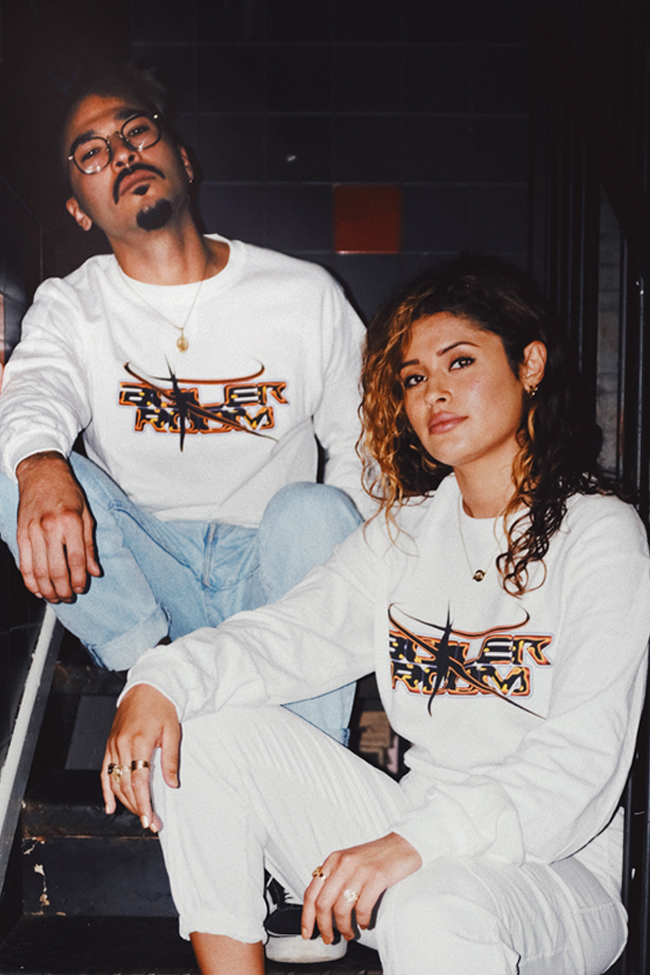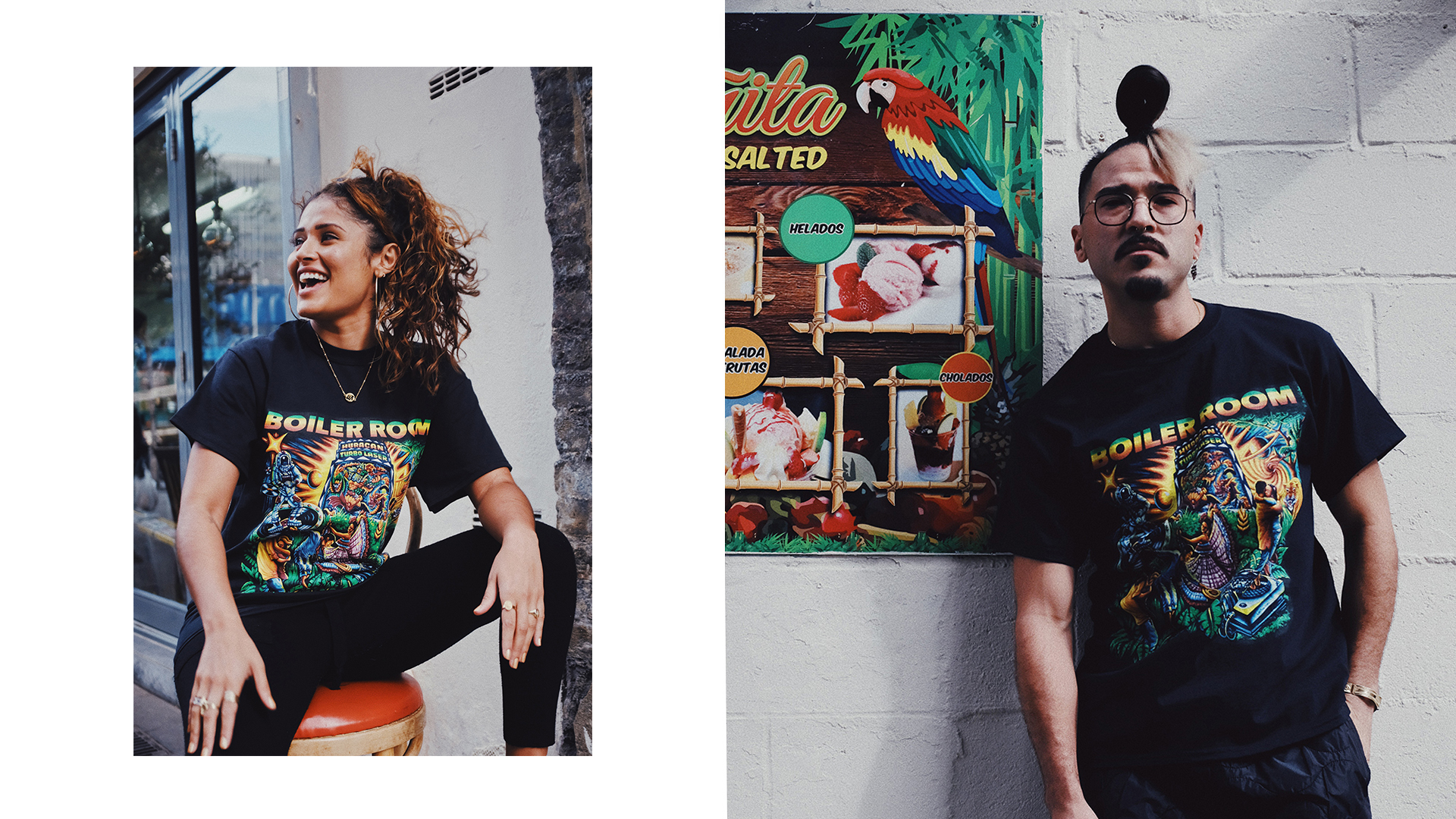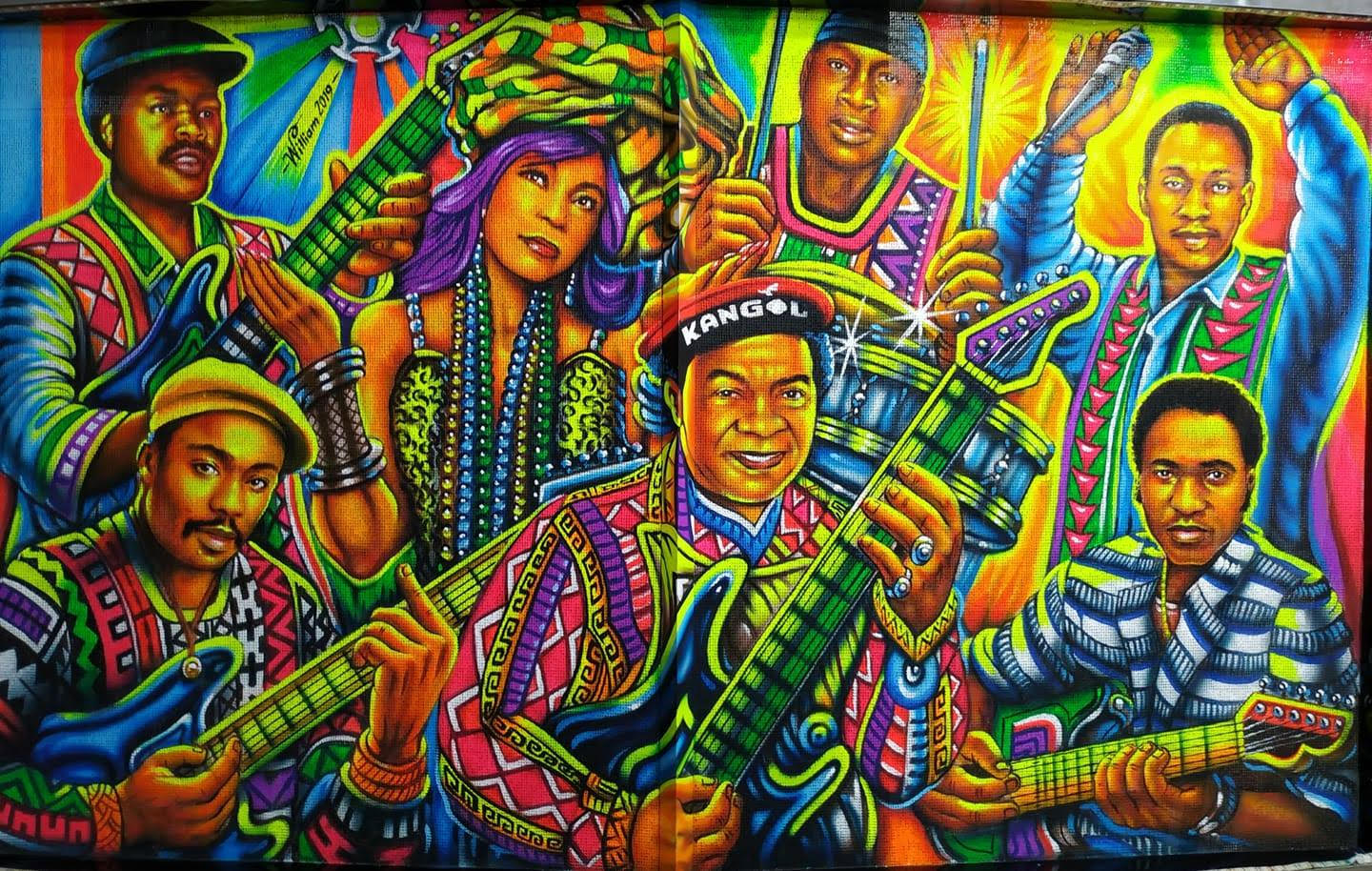
Entre Mundos: A Discussion On Latin American Art And Symbolism With William Gutiérrez Peñaloza & Jonathan Castro Alejos
Brought to life through parties, concerts, institution takeovers, content and apparel, SYSTEM explores immigration, identity, anti-authoritarianism and cultural expression through the lens of music.
For our newly-released range of apparel we chose to work with William Gutiérrez Peñaloza and Jonathan Castro Alejos, two artists dealing with Latinx symbolism and tradition in two very different ways, for a visual celebration of the depth of diversity within the music SYSTEM represents.
William Gutiérrez Peñaloza is widely-considered the maestro of Colombia’s picó scene where local sound systems playing soukous, salsa, champeta and highlife are adorned with eye-popping fluorescent paint and Latin Caribbean symbolism. Check this film for a more detailed insight into Picó. We wanted to work with William to showcase his mind-altering art and present it to a wider audience.
Whereas Peruvian artist Jonathan Castro Alejos represents the new generation of creativity within the Latin diaspora through his critically acclaimed work that seeks out possible futures under the concept of the “aura of design.’ Currently participating in the Jan Van Eyck residency focusing in the research of the symbology, sound, rituals and traditions of the Inca Cosmovision and Andean world, Jonathan has worked with Nike, JASSS, Mannequin Records and 032c magazine among others as well as previously delivering one of our monthly stings.
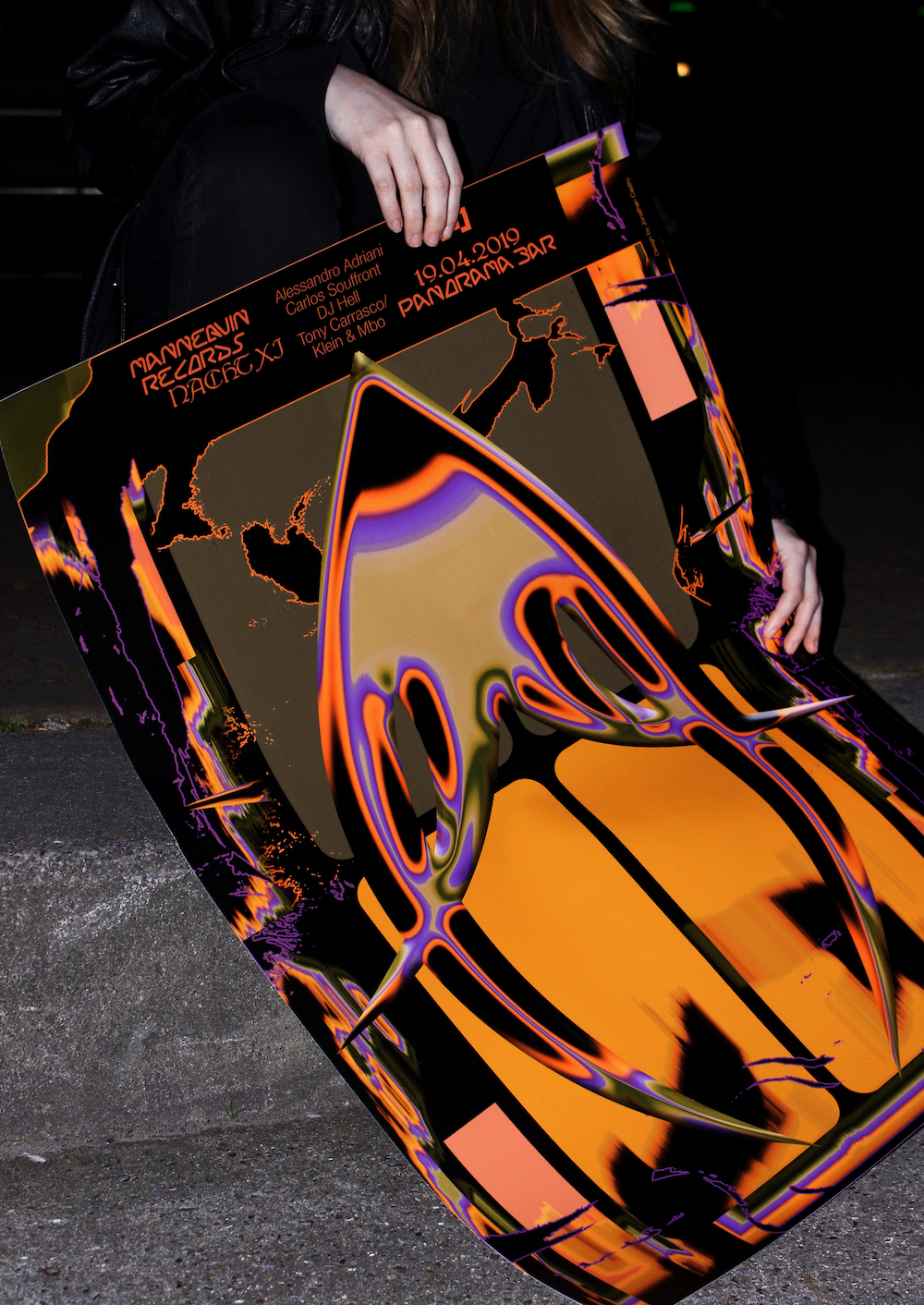
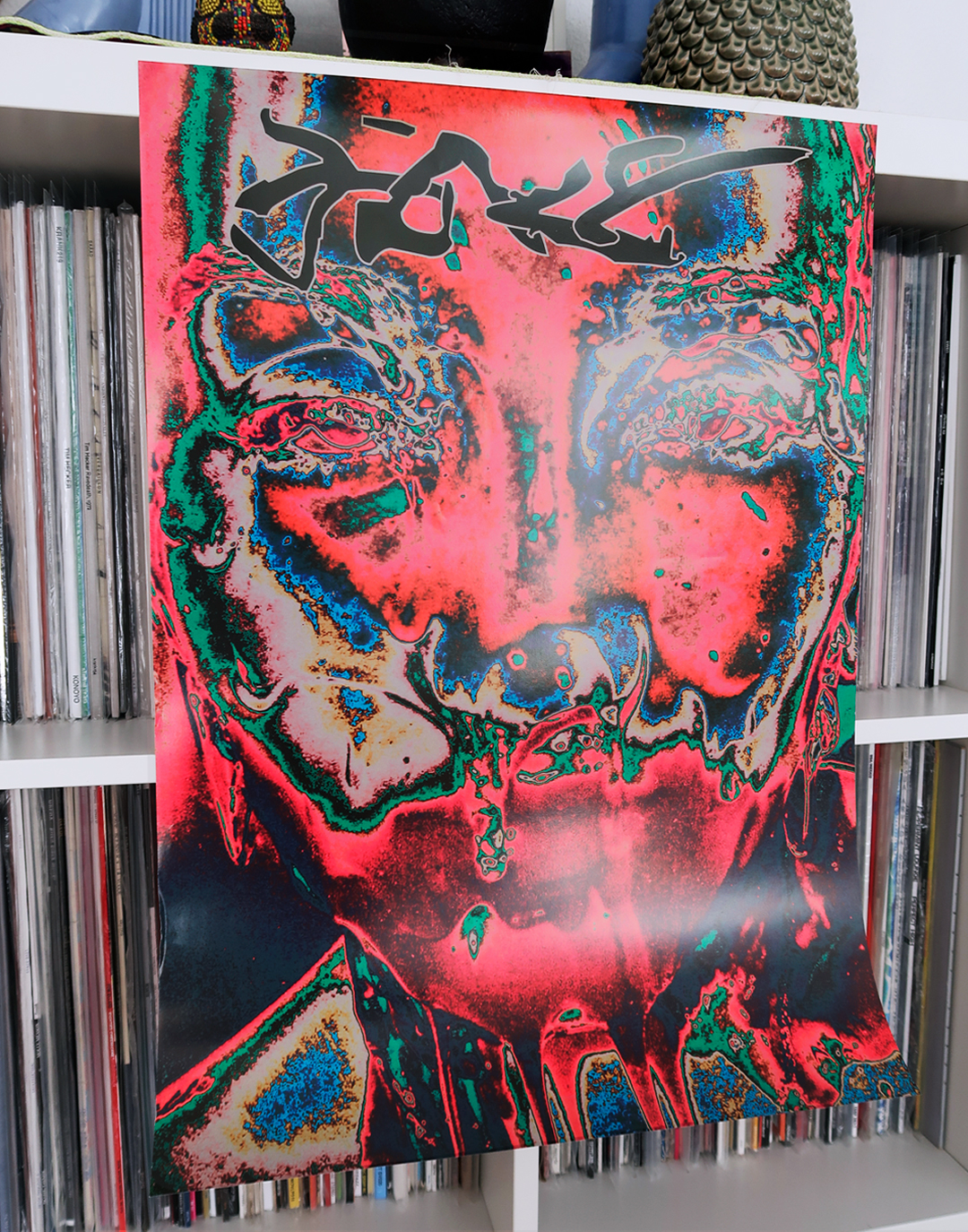
Seemingly at polar opposites aesthetically, both have been incredibly influenced by developments within the Diaspora to get to where they are now. Yet through our collaborations, we can see that the two artists are closer than they may seem to be. The two artists are legends! A self-professed fan of Peñaloza's work, Jonathan kindly agreed to ask El Maestro William a few questions about picó, influences, the emotional resonance of his work and the importance of those vibrant colours in his art.
J: What should be the starting point to project the future Picó art or what should be the best way to preserve it?
W: Picó is an important part of popular art. It’s narrative, folkloric, naive, and sometimes picós painters base their art on photos, magazines, posters and from the Internet. What makes picó special, above all, is the psychedelic power of its loud colours and the energies they transmit, as well as the strong contrasts and very dynamic compositions.
In order to preserve picó, we must maintain the characteristics that differentiate it from other popular artistic expressions and expose it to the global audience. Picó art should be taught in schools and there should be many art picós painters.
What is the true challenge of a painter?
Painters must first learn the technical, expressive principles of their chosen artistic discipline and develop a personal style that sets them apart. The far greater challenge for any painter is to ascend to a level of creativity and production where all their work has visual impact and is recognized for its quality.
You manage to maintain authorship and integrity in your work. Nowadays, this is particularly difficult, especially when there are already several picós painters. What makes your work different from all the rest?
Every painter has their own personal style, no-one artist paints exactly the same as another, no matter how much you try to copy. I think my work differs from my contemporaries because most of them are self-taught and observational, they’ve not studied art, design or painting. Yey they still do a great job.
In my case, I started as an empirical popular artist and then I studied visual arts at a university. I work as an art education teacher in a public school. All this gives me an advantage in my own art. I still do popular (picotero) art, but with knowledge of drawing, design, perspective, anatomy, human figure and art history. I am really an academic artist who paints popular art, I have been doing it all my whole life and I feel happy doing it.
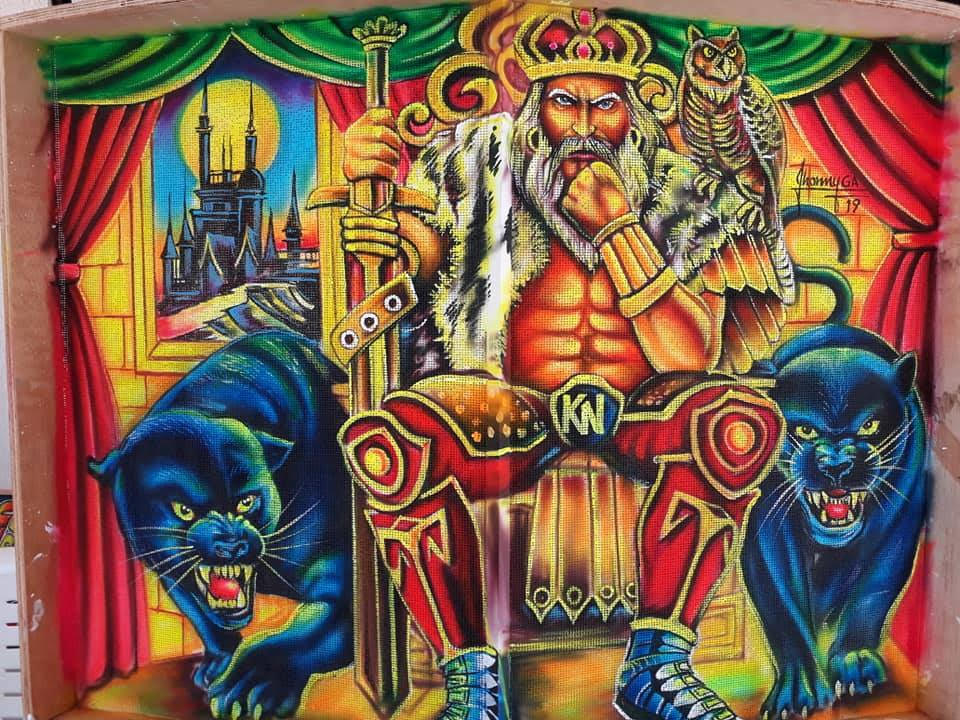
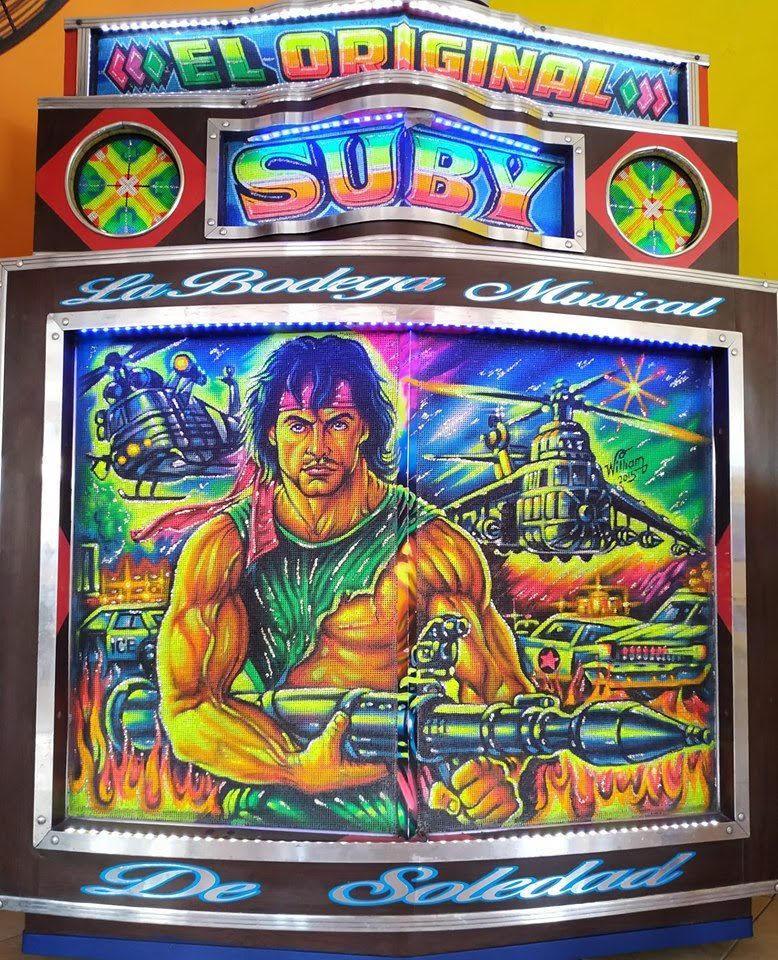
Colours are a significant part of your work. Apart from giving life to the community, what do you think is the value hidden behind them?
I’ve been invited to host workshops and presentations about picó art throughout Latin America, which, to me, demonstrates the recognition for this artform. In picó art, the fluorescent color and the strong contrasts are fundamental, as well as a lot of rhythm and movement in the composition.
Picós take place in the Colombian Caribbean, where people are drawn towards strong and bright colours, as well as loud music which is very happy and outgoing. I think the strong colours in the picó drawings go hand in hand with the loudness of the music.
What do you think could be a way to create communities with identity and memory and a community that values its own traditions?
Communities must learn to recognize themselves in their particular characteristics. To see themselves from outside; to value what they are; what looks ordinary to them, their traditions, to have a sense of belonging to everything that makes them different from the rest. They must spread all this and teach it to the new generations to cultivate and preserve these communities.
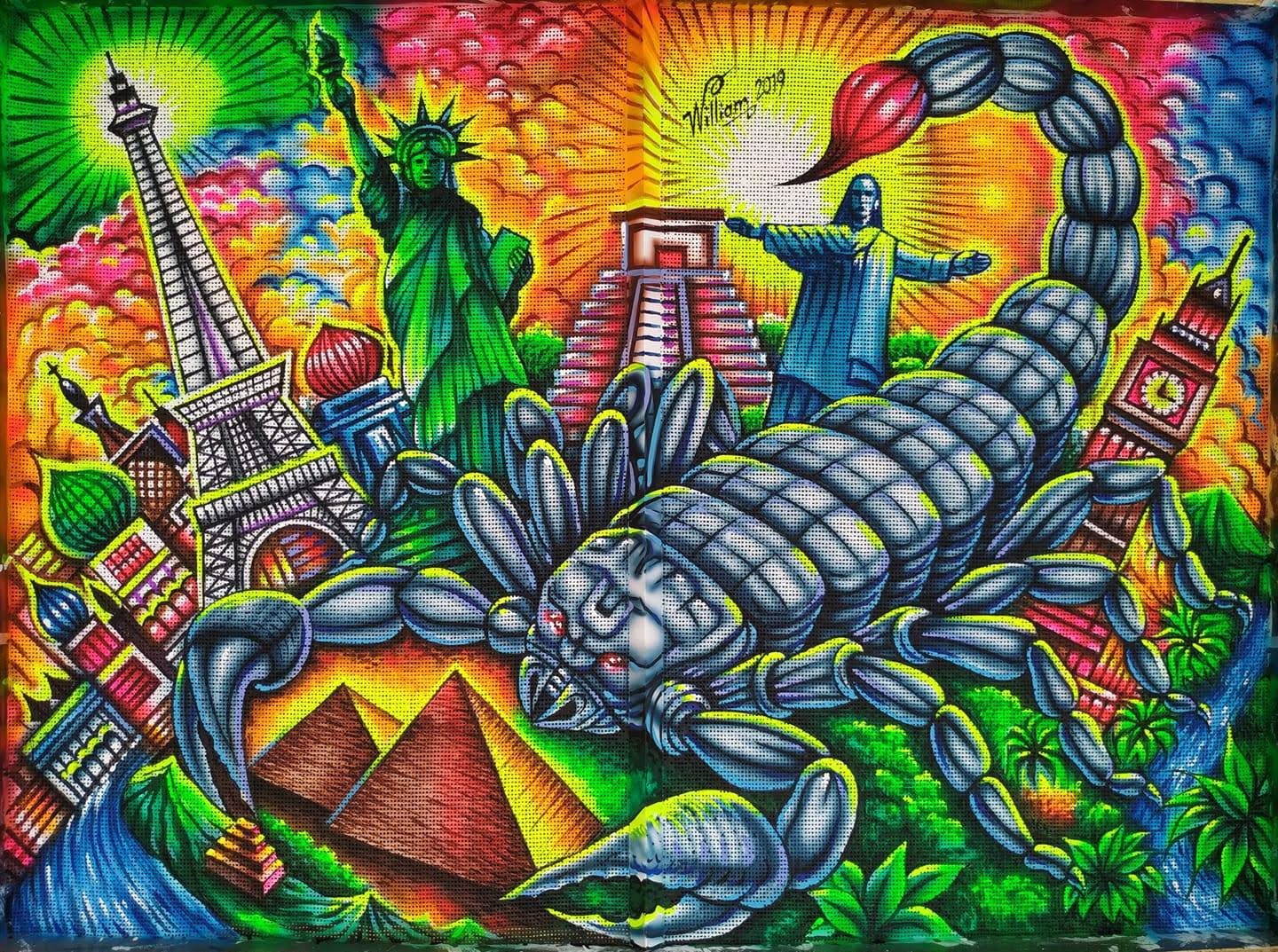
Why do you think that many of these popular and traditional artistic practices are being appreciated out of their original context - in Europe for example?
What we see every day becomes everyday life, whereas any person that arrives from outside sees it from another viewpoint, derives a different context or artistic value. What we, as insiders, view as monotonous, rough and even vulgar can be seen as artistic expression with great cultural power from the outside.
Do you feel that your work transmits energy or any kind of emotion?
Picó has great expressive strength due to its strong colour, themes and composition. For those of us who see and hear picós all the time it is normal. But to a European, for example, who comes from a colder climate and is more accustomed to sober, grey colours, may have a very strong and energetic reaction to picó. The psychedelia of Picó and loudness of the music can cause a state of ecstasy or trance in people that attend picó dances.
Could you please recommend a record that has changed your life or that was the reason to start in the picó painting?
There are no particular albums, but music inspires me every time I paint. The type of music varies depending on the day and my mood; sometimes its coastal, vallenato, salsa but most of the time, African music. I have my own picó, “The Artist,” and I have also been a DJ and I have a good vinyl collection. I have always existed in this world between painting and music… “in the picó world”.
Both editions of SYSTEM apparel are available at the Boiler Room shop
Huge thanks to Fabian Altahona Romero from the Africolombia blog for all his help and assistance in making this article happen
